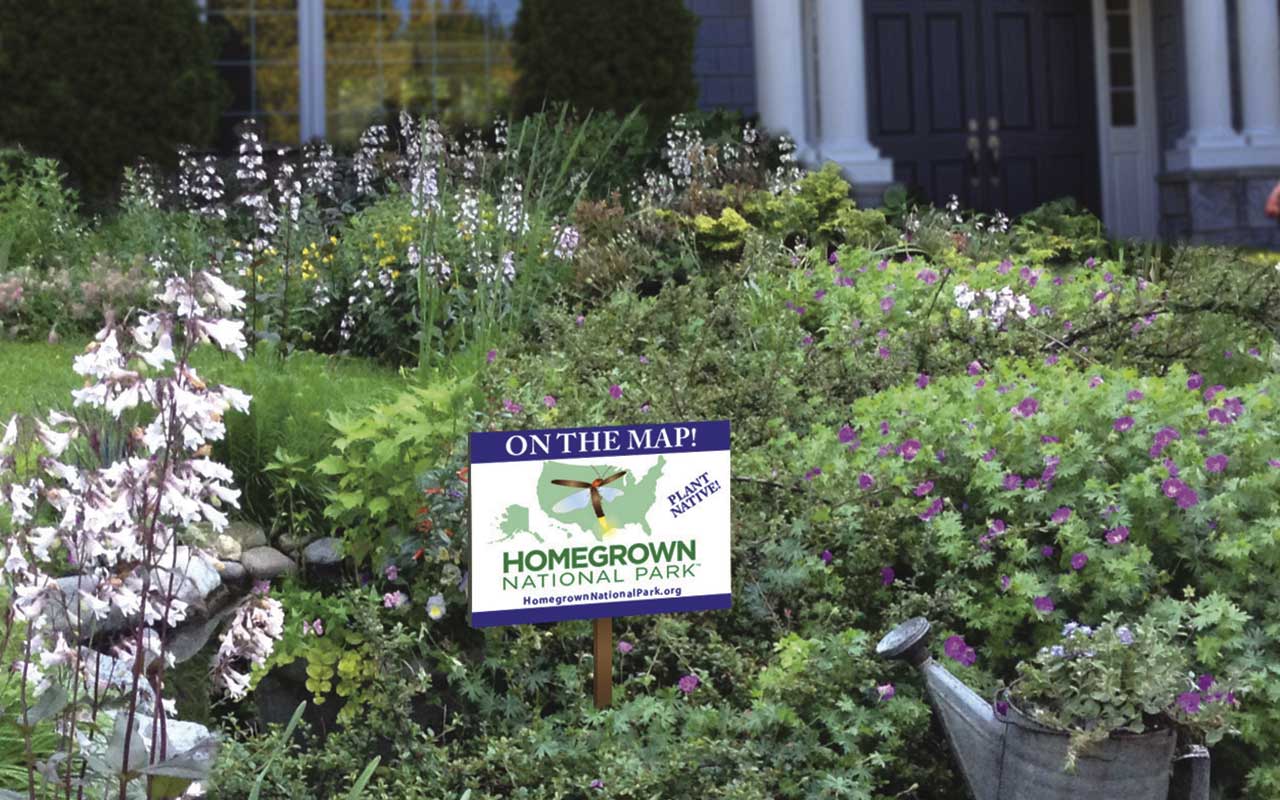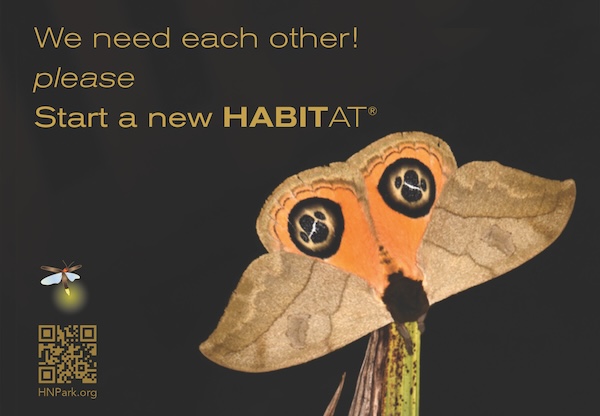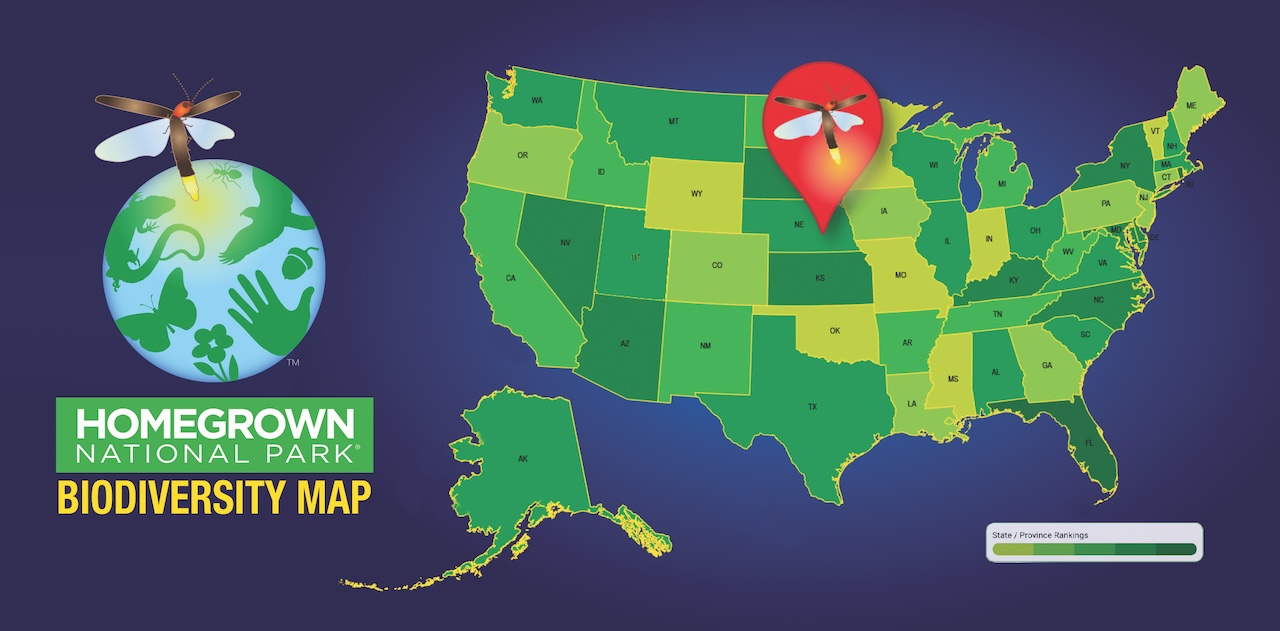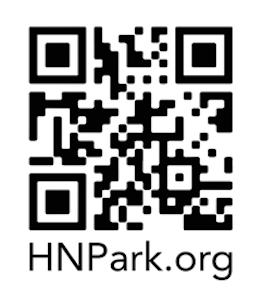This Month’s Featured Article

Homegrown National Park: Go Small and Go Homegrown
Homegrown National Park® is determined to save biodiversity one privately owned land at a time. Seventy-eight percent – that’s 1.3 billion acres – of all land in the lower 48 states of the US is privately owned. That’s a lot of land we have direct control over, and Homegrown National Park empowers all of us to make a difference in one planting container, one square foot, one acre at a time.
HNP’s goal is to arrest and reverse the 800,000 acres of habitat lost each year in the US, in order to help address the loss of bird, animal, and insect species that occupy those habitats. HNP reframes the complex issue of biodiversity and habitat preservation, which can be mired in large numbers and staggering statistics, and make it simple.
This information can help you make intentional choices about what to do with your land to encourage species and regeneration. Whether it’s planting a container on your deck with plants that attract pollinators, creating a small native garden, planting a single tree, or converting acres to meadow, it all counts. You can scale your efforts based on what is manageable for you, and no effort is too small.
Positivity and the human mind
The philosophy of HNP is grounded in how the human mind works. Positivity and small steps lead to sustainable and lasting behavior change. Large numbers that outline a crisis and appeal to logic are paralyzing. Specific examples in literally our own yard that work on our emotions are galvanizing. Ask any fundraiser what’s more compelling – a table with statistics or a solitary tear rolling down the cheek of one person you can save.
 Bitten by the biodiversity bug
Bitten by the biodiversity bug
HNP co-founders Doug Tallamy and Michelle Alfandari came together from different worlds. Tallamy is a well-respected entomologist, wildlife ecologist, professor at the University of Delaware, and New York Times best-selling author of several books exploring how regular people like you and me can interact with the natural world in a way that preserves and builds biodiversity. Alfandari is a beach-loving city dweller, entrepreneur, and marketing and licensing strategist who now lives full time in rural Sharon, CT, surrounded by plants, trees, insects, and animals that were a mystery to her – one she was not all that keen to solve.
Tallamy’s talk at the Salisbury Forum in 2017 served as their call-to-action matchmaker. Tallamy described how each of us can contribute to protecting and creating biodiversity and habitat. Alfandari was a reluctant audience member, cajoled into attending by neighbors and natural landscape practitioners Robin Zitter and Michael Nadeau.
Something clicked for Alfandari during that lecture. She began to see how she could make a difference in saving the natural world through choices for her property. Her branding and marketing brain reactivated, and she started to think about how Tallamy could infuse emotion and scalability into his message of how many people taking small actions can significantly impact biodiversity.
Crash course in biodiversity and branding
The two began a conversation about how to bring their professional strengths together. He educated her in biodiversity science, and she gave him a crash course on how to appeal to people in a way that mobilizes emotion into action.

The result is Homegrown National Park, a 501(c)3 non-profit organization dedicated to making increased biodiversity part of what it means to be a private landowner, whether individual, group, non-profit, or corporate. It’s not political or legislative. It’s good personal stewardship of the land we have control over. By focusing on our own slice of heaven, we can create a needed paradise for native species.
Much of Tallamy’s research supports habitat preservation and restoration so native plants, animals, and insect species can thrive. When they thrive we benefit from their ecosystem services. These include producing oxygen and clean water, enabling pollination of plants and trees, controlling pests, and storing carbon.
Tallamy writes, “Our national parks, no matter how grand in scale, are too small and separated from one another to preserve species on the level needed by each and every human on earth. Thus, the concept for the Homegrown National Park, a bottom-up call to action to restore habitat where we live, work, play, pray, learn, farm, and graze, effectively extending our national parks to our communities.”
The Map
At the heart of Homegrown National Park is the Biodiversity Map or “The Map.” Alfandari explains that the first-of-its-kind interactive map uses a citizen-science model that allows individuals to log their efforts to see how their native planting, clearing of invasives, and reducing the use of chemicals can add to the similar efforts of others. Every native plant in the ground or invasive cleared is a drop in the biodiversity bucket. Over time, those drops add up.
Individuals can register their property on the map and keep track of their incremental efforts. They can also see what is happening near them to build momentum for local biodiversity. Alfandari states, “The Map amplifies and consolidates individual and group actions and creates a dynamic visual representation, pinpointing where actions are thriving and where they are desperately needed.”
Since The Map launched in 2021, it has documented over 100,000 acres of concrete efforts to restore and conserve native habitats.
Alfandari knows that guilt is not a motivator that calls people to action. She explains that “finding an emotional access point, creating personal empowerment, and connecting to others doing the same is an antidote to despair.” Biodiversity is global, but it’s also deeply personal. She states, “If you breathe, you need biodiversity.” HNP is truly a grassroots effort for her, and The Map is the nexus of collective local efforts.

Get on The Map
Creating an account and putting yourself on The Map is easy and quick. From there, you can enter your efforts to cultivate biodiversity by planting natives and removing invasives, along with the things you’re not doing, such as using chemical fertilizers and pesticides, removing healthy trees, mowing all your lawn, and planting non-native shrubs and plants. All these intentional choices we make with nature in mind allow our properties to work harder for nature and benefit us. 
A new feature on The Map will allow entities to create accounts to add their efforts to the mix. This will allow a corporate HQ with a native planting area outside the entrance or a school with a pollinator garden to participate in The Map. Towns and cities, non-profits, houses of worship, farms, golf courses, and garden groups can validate their efforts on The Map.
Resources to educate and find help
Tallamy and Alfandari did their due diligence before spending four years getting Homegrown National Park to the place it is today – a non-profit with an executive director and global team. They did not want to replicate the work of others but rather become a hub of biodiversity efforts and resources to help landowners maximize their property’s biodiversity. This includes a robust list of resources that range from educating yourself through Tallamy’s substantial and accessible research to finding a native plant nursery and ecological landscapers in your area. For Alfandari, “If someone else is doing it, we refer people to them and provide links to those resources on our website.”
Fireflies lighting the way
Tallamy and Alfandari selected the firefly as their beacon of hope. These insects symbolize the threat of habitat destruction and the hope of Homegrown National Park’s work.
The Firefly Specialist Group of the International Union for Conservation of Nature has identified 18 species in North America “at risk of extinction.” This is borne out by looking for fireflies on our property – they’re hard to find. Remember back to your childhood and the nightly summertime ritual of chasing fireflies in the dusk? They were everywhere and can be again through what we choose to do in our yards.
HNP wants you to focus on those decisions. We can impact the firefly’s survival by reducing outdoor lights, eschewing pesticides and chemical fertilizers, planting native grasses, shrubs, and trees, incorporating water gardens, and providing areas where our leaves are unraked.
The firefly exemplifies what Homegrown National Park is all about: acknowledging the large and complex threats; refusing to be paralyzed by them; and joining with others to take small, empowering, and impactful steps.
By doing this, we address the threats to the natural world and ourselves by embracing our own biodiversity locus of control – our backyard. •
For more information about Homegrown National Park, to join the Biodiversity Map, and to contribute to its important work, visit homegrownnationalpark.org.



